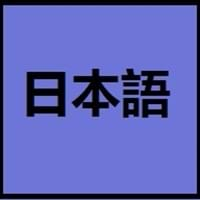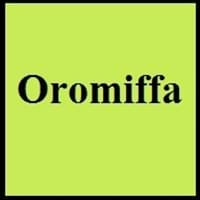Japanese and Oromo
Countries
Japan
Ethiopia, Kenya
National Language
Japan
Ethiopia
Second Language
Not spoken in any of the countries
Not spoken in any of the countries
Speaking Continents
Asia, Pacific
Africa
Minority Language
Palau
Somalia
Regulated By
Agency for Cultural Affairs (文化庁) at the Ministry of Education
Not Available
Interesting Facts
- In Japanese Language, there are 4 different ways to address people: kun, chan, san and sama.
- There are many words in Japanese language which end with vowel letter, which determines the structure and rhythm of Japanese.
- Oromo language is the third most spoken language in Africa.
- Oromo is most spoken language in Cushitic Family.
Similar To
Korean Language
Somali Language
Derived From
Not Available
Not Available
Alphabets in
Japanese-Alphabets.jpg#200
Oromo-Alphabets.jpg#200
Writing Direction
Left-To-Right, Horizontal, Top-To-Bottom
Not Available
Time Taken to Learn
Not Available
Hello
こんにちは (Kon'nichiwa)
akkam
Thank You
ありがとう (Arigatō)
Galatoomi
How Are You?
お元気ですか (O genki desu ka?)
Attam jirta/jirtu?
Good Night
おやすみなさい (Oyasuminasai)
Nagayattii buli
Good Evening
こんばんは (Konbanwa)
Akkam waarite
Good Afternoon
こんにちは (Konnichiwa!)
Attam oolte / ooltan
Good Morning
おはよう (Ohayō)
Attam bulte/bultan
Please
お願いします (Onegaishimasu)
Maaloo
Sorry
ごめんなさい (Gomen'nasai)
naa dhiisi
Bye
さようなら (Sayōnara)
Nagayattii!
I Love You
愛しています (Aishiteimasu)
Sin jaaladha
Excuse Me
すみません (Sumimasen)
Maaloo na dabarsi
Where They Speak
Kagawa
Ethiopia, Kenya
Where They Speak
Fukuoka
Kenya
How Many People Speak
Not Available
Where They Speak
kansai
Kenya
How Many People Speak
Not Available
Native Name
日本語
Afaan Oromo
Alternative Names
Not Available
Afaan Oromoo
French Name
japonais
galla
German Name
Japanisch
Galla-Sprache
Pronunciation
/nihoɴɡo/: [nihõŋɡo], [nihõŋŋo]
Not Available
Ethnicity
Japanese (Yamato)
Oromos
Language Family
Japonic Family
Afro-Asiatic Family
Subgroup
Not Available
Cushitic
Branch
Not Available
Not Available
Early Forms
Old Japanese, Early Middle Japanese, Late Middle Japanese and Early Modern Japanese
No early forms
Standard Forms
Japanese
Afaan Oromo
Signed Forms
Signed Japanese
Not Available
Scope
Individual
Macrolanguage
ISO 639 6
Not Available
Not Available
Glottocode
nucl1643
nucl1736
Linguasphere
45-CAA-a
No data available
Language Type
Living
Living
Language Linguistic Typology
Subject-Object-Verb
Not Available
Language Morphological Typology
Agglutinative, Synthetic
Not Available
All Japanese and Oromo Dialects
Most languages have dialects where each dialect differ from other dialect with respect to grammar and vocabulary. Here you will get to know all Japanese and Oromo dialects. Various dialects of Japanese and Oromo language differ in their pronunciations and words. Dialects of Japanese are spoken in different Japanese Speaking Countries whereas Oromo Dialects are spoken in different Oromo speaking countries. Also the number of people speaking Japanese vs Oromo Dialects varies from few thousands to many millions. Some of the Japanese dialects include: Sanuki, Hakata. Oromo dialects include: Borana , Orma. Also learn about dialects in South American Languages and North American Languages.
Japanese and Oromo Speaking population
Japanese and Oromo speaking population is one of the factors based on which Japanese and Oromo languages can be compared. The total count of Japanese and Oromo Speaking population in percentage is also given. The percentage of people speaking Japanese language is 1.90 % whereas the percentage of people speaking Oromo language is 0.36 %. When we compare the speaking population of any two languages we get to know which of two languages is more popular. Find more details about how many people speak Japanese and Oromo on Japanese vs Oromo where you will get native speakers, speaking population in percentage and native names.
Japanese and Oromo Language Codes
Japanese and Oromo language codes are used in those applications where using language names are tedious. Japanese and Oromo Language Codes include all the international language codes, glottocodes and linguasphere.





